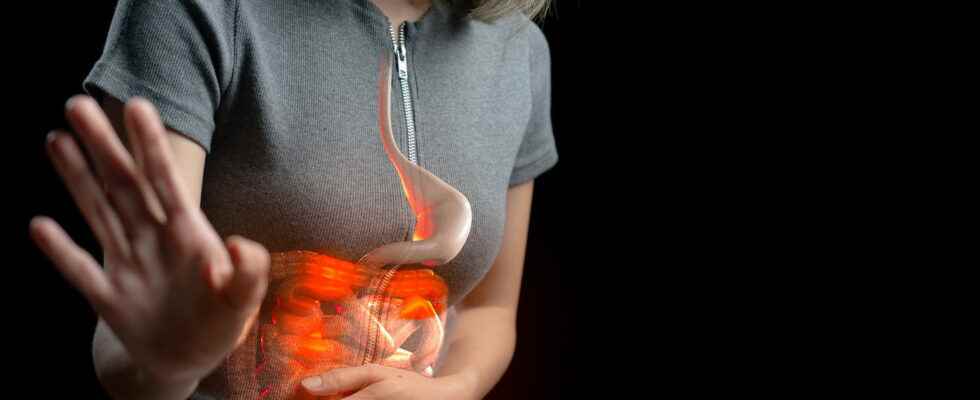Rare Disease Day takes place on February 28, 2023. In France, more than 7,000 diseases are said to be “rare” and around 4 million people are affected by a rare disease. Eyes, blood, neurological… What is the list of the best known?
[Mis à jour le 16 février 2023 à 16h45] In France, more than 7,000 diseases are classified as “rare” and approximately 4 million people are affected by a rare disease. February 28, 2023 is Rare Disease Day. The opportunity to raise awareness of these pathologies which represent a real public health challenge. What is a rare disease? A rare bone disease? Skin ? Eyes ? Neurological? Some blood ? What are the rare female diseases? What is the treatment for rare diseases?
Definition: what is a rare disease?
A disease is qualified as “rare” when it affects less than one in 2,000 people, i.e. for France less than 30,000 people for one pathology. It is estimated that approximately 6 to 8% of the world’s population is affected by a rare disease, i.e. about four million French people. A rare disease is often severe, chronic and progressive, with an increased risk of complications and significant repercussions on the quality of life of patients and their families. A rare disease can impact physical, sensory, mental or psychic functions. More than half of rare diseases start in childhood.
A disease is considered “rare” when it affects less than 1 in 2,000 people.
In effect, “in half of the cases, they concern children under the age of 5 and are responsible for 10% of deaths between one year and 5 years“, says the Ministry of Health. When a disease affects only a few dozen people in the world, it is said to be “super rare“Every month, several new rare diseases are discovered around the world.
► It is said thata disease is orphan when it is rare and does not benefit from an effective treatment.
► Note that rare cancers and rare infectious diseases do not fall within the scope of rare diseases as currently defined in France, specifies the Ministry of Health.
What is the list of rare diseases?
In January 2021, the portal OrphaNet published a list of rare diseases. This Inserm site also offers a rare disease search engine. There ICD-11 (International Classification of Diseases) published by WHO in 2022 provides a classification of rare diseases. This classification was developed in collaboration with several partners, including OrphaNet.
When is Rare Disease Day?
International Rare Disease Day takes place in February. In 2023, this day is celebrated on February 28.

What are the origins of rare diseases?
► 80% rare diseases have a genetic origin
► 20% rare diseases have a non-genetic origin:
- Infectious origin
- Teratogenic originfollowing a substance that may increase the risk of fetal abnormality (Depakine, Distilbène, Alcohol, etc.)
- Immunological origin
- Environmental origin…
What are rare bone diseases?
- Osteogenesis imperfecta
- Hypochondroplasia
- Primordial dwarfism
- Multiple exostoses
- Fibrous dysplasia, McCune-Albright syndrome
- Weaver syndrome.
- Sotos syndrome and Sotos-like syndrome.
- Marshall-Smith syndrome.
- Proteus syndrome.
- CLOVE-syndrome
- Marfan syndrome
- Pathologies related to calcium phosphate metabolism: tumoral calcinosis, pseudohypoparathyroidism (PHP), pseudopseudohypoparathyroidism (PPHP), progressive bone heteroplasia, hypophosphatemia (X-linked or not)
- Dysostosis (skull, vertebrae, kneecaps, limbs): if a multidisciplinary approach is needed, depending on the syndrome and overall pathology…
What are rare blood diseases?
- Acquired thrombotic thrombocytopenic purpura
- sickle cell disease
- Betathalassemia
- Hemophilia A and B…
What are rare eye diseases?
- Congenital cataract
- Retinal degeneration
- Optic nerve atrophy
- Eye malformations
- Retinitis pigmentosa
- Usher syndrome
- Retinoblastoma…
What are the rare diseases of the spinal cord?
- Syringomyelia
- transverse myelitis
- Spinal infarction
What are rare skin diseases?
- Hereditary ichthyosis and palmoplantar keratoderma
- Epidermolysis bullosa
- Ectodermal dysplasias, syndromes with skin fragility, X-linked syndromes and unclassifiable diseases, hair abnormalities
- Non-bullous autoimmune diseases
What are the rare neurological diseases?
Next to 800 rare neurological diseases are described in France. Among them :
- Charcot’s disease (ALS)
- Rett syndrome
- Huntington’s disease
- Dystonia
- Progressive supranuclear palsy (PSP)
- Prion diseases
- Ataxias
- Spastic paraplegia
- Frontotemporal degeneration (FTD)…
What are the rare diseases in women?
Some rare diseases mainly affect women. Among them :
- Turner syndrome
- Rokitansky syndrome
- Breast polyadenomatosis
- von Willebrand disease
- Prader-Willi syndrome
What is the management of a rare disease?
Reference centers have 5 essential missions :
|
Rare diseases are characterized by a great diversity in clinical manifestations and symptoms, which complicates the diagnosis. Due to their rarity and diversity, they cannot all be studied in medical studies. Some are therefore linked to a lack of information from health professionals and the medico-social sector. Reference centers (CRMR) cover the entire national territory and are made up of reference centers and centers of competence (or resources and competences), which provide care and organize the health pathways of people affected by or suffering from illnesses rare. To follow up on a rare disease, it is necessary to contact his referring doctor, which will specify the appropriate consultation methods. (remote or face-to-face consultation). It is also possible to refer to the recommendations available on the Orphanet portal.
What are the associations for rare diseases?
Several associations work to support people with rare diseases and their families. Among those :
Sources: Rare diseases sheet, Ministry of Health, 05/25/2021 / Rare diseases: patient care and support guide, ARS Grand Est / 2019 Activity report Health and Rare Diseases sector, 3 November 2020, Ministry of Health / Association Alliance Maladies Rares
